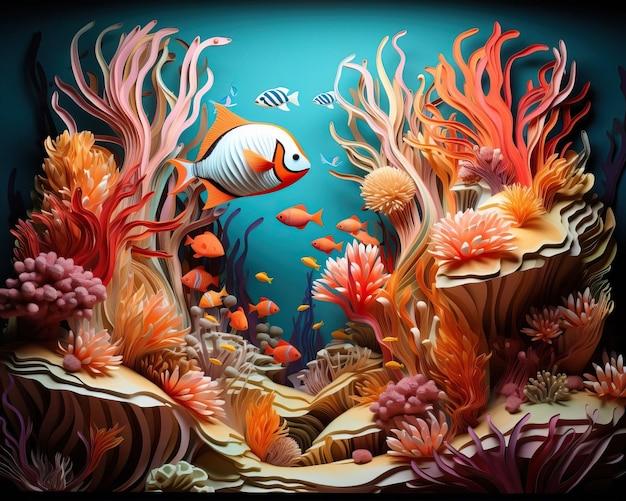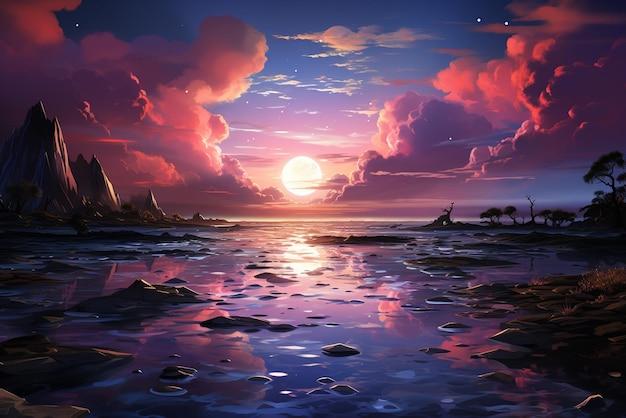The Silk Road and the Indian Ocean trade were two significant networks of exchange that shaped the course of human history. These routes, although distinct in their geography, interconnected through a web of commercial activities, cultural exchanges, and the movement of ideas. In this blog post, we will explore the similarities between these two trade routes, delve into their respective characteristics, and uncover the ways in which they influenced the world as we know it today.
The Indian Ocean trade routes, often compared to the Silk Road, served as a maritime network connecting various countries dotted around the Indian Ocean basin. Extending from East Africa to the Arabian Peninsula, the Indian Subcontinent, Southeast Asia, and even to China, these routes saw a bustling exchange of goods, ideas, and cultures. Just like the Silk Road, the Indian Ocean trade enabled the flow of silk, spices, precious metals, and other commodities, forging connections between distant lands and shaping the economies of nations for centuries.
It’s time to embark on a fascinating journey through time and space, as we uncover the similarities between the Silk Road and the Indian Ocean trade, understand the impact of the compass on maritime navigation, and explore the countries that have been part of the Indian Ocean trade historically. So grab your virtual passports, fasten your seatbelts, and let’s set sail through the annals of history to discover the common threads that connect the Silk Road and the Indian Ocean trade.

How Were the Silk Road and the Indian Ocean Trade Similar?
In this section, we’ll explore the striking similarities between two of history’s most famous trade networks: the Silk Road and the Indian Ocean trade. Prepare for a journey through time as we uncover the common threads that linked these two vibrant avenues of commerce.
Shared Routes: Traversing the Ancient World
One of the key similarities between the Silk Road and the Indian Ocean trade lies in their expansive networks of routes. The Silk Road, stretching across vast stretches of Asia and Europe, provided a land-based passage for traders, while the Indian Ocean trade, as the name suggests, thrived through maritime commerce. However, both networks branched out and intersected, allowing goods, ideas, and cultural influences to flow between distant lands.
Hub of Diversity: A Melting Pot of Cultures
Just like a bustling marketplace, the Silk Road and the Indian Ocean trade were vibrant hubs of diversity. Traders from various civilizations flocked to these routes, bringing with them commodities like silk, spices, precious metals, and more. The mingling of different cultures and customs created a fascinating amalgamation that enriched the societies along these trade routes.
Exchange of Ideas: Intellectual Crossroads
Beyond the exchange of goods, the Silk Road and the Indian Ocean trade also served as conduits for the exchange of ideas. Buddhism, for instance, spread from India to China, while religions like Islam found their way to Southeast Asia through the Indian Ocean trade. Universities, libraries, and centers of learning emerged along these routes, fostering intellectual growth and cultural enlightenment.
Economic Empires: Fueling Trade and Prosperity
Both the Silk Road and the Indian Ocean trade played a pivotal role in driving economic growth and prosperity. These trade networks facilitated the expansion of empires, such as the Roman Empire and the Gupta Empire, by providing them access to valuable resources and markets. The continual flow of goods along these routes stimulated economic activity, leading to the rise of prosperous cities and flourishing civilizations.
Environmental Adaptability: Overcoming Challenges
Given the vastness of their reach, the Silk Road and the Indian Ocean trade encountered various environmental challenges. Whether it was navigating treacherous terrains along the Silk Road or navigating unpredictable monsoons in the Indian Ocean, traders had to adapt and find innovative solutions to overcome these obstacles. The resilience of these ancient traders is a testament to human determination and ingenuity.
Legacy: Enduring Impact on Globalization
The impact of the Silk Road and the Indian Ocean trade extends far beyond their existence in history. These trade routes played a critical role in shaping the world as we know it today. By fostering interregional connections, they laid the foundation for globalization. The cultural exchanges, technological advancements, and economic interdependence that emerged from these trade networks continue to influence our modern society.
In conclusion, the Silk Road and the Indian Ocean trade shared numerous similarities that shaped the history and development of civilizations across the globe. Their vast networks, cultural exchanges, economic significance, and enduring legacies make them timeless testaments to human enterprise and connectivity.
So strap on your time-traveling boots as we delve deeper into the fascinating intricacies of the Silk Road and the Indian Ocean trade in our upcoming sections. Let’s embark on a captivating voyage through history!

FAQ: How the Silk Road and the Indian Ocean trade were alike?
How were the Silk Road and the Indian Ocean trade similar
The Silk Road and the Indian Ocean trade were both bustling networks of commerce that connected countries and regions during ancient times. These ancient trade routes facilitated the exchange of goods, ideas, and culture between different civilizations. Let’s dive into the similarities between these two remarkable trading systems.
What pathway can the Indian Ocean trade routes be compared to
If the Silk Road were a wild west trade caravan journey, think of the Indian Ocean trade routes as a maritime adventure across the vast blue expanse. The Indian Ocean, with its sprawling network of sea routes, served as the conduit for trade between Africa, the Middle East, India, Southeast Asia, and even China!
How did the trusty compass aid the Indian Ocean trade
Ah, the humble compass, the navigator’s best friend! In the case of the Indian Ocean trade, this nifty gadget proved to be a game-changer. With its magnetic magic, sailors no longer had to play a never-ending guessing game with the wind and stars. The compass revolutionized navigation, allowing ships to chart more precise courses and sail confidently across the Indian Ocean’s unpredictable waters.
Which countries connect with the Indian Ocean
The Indian Ocean is the ultimate people connector, linking countries from various corners of the globe. You’ll find a bit of everything along its shores! From bustling spice markets in India, vibrant cultural tapestries in Indonesia, exotic wildlife in Kenya, and dreamy island getaways in the Maldives, the Indian Ocean brings together a diverse mix of nations, cultures, and landscapes.
So, there you have it! The Silk Road and the Indian Ocean trade may have spanned different terrains, but they intertwined the world in a web of trade, exploration, and adventure. From sandy deserts to vast seas, these ancient trade routes shaped history and left a lasting legacy that still captivates our imagination today. Hop on the virtual Silk Road or set sail on the Indian Ocean trade routes in your mind, and let the echoes of a bygone era mesmerize you. Happy exploring, oh curious traveler of knowledge!
The Silk Road and the Indian Ocean trade, similar and yet unique, are a testament to the ingenuity and interconnectedness of ancient civilizations. Through caravan caravansaries and bustling seaports, these trading networks brought together people, goods, and ideas, creating a rich tapestry of cultural exchange and economic prosperity. So, grab your virtual backpack and embark on a journey through time as we unravel the fascinating similarities between the Silk Road and the Indian Ocean trade.
